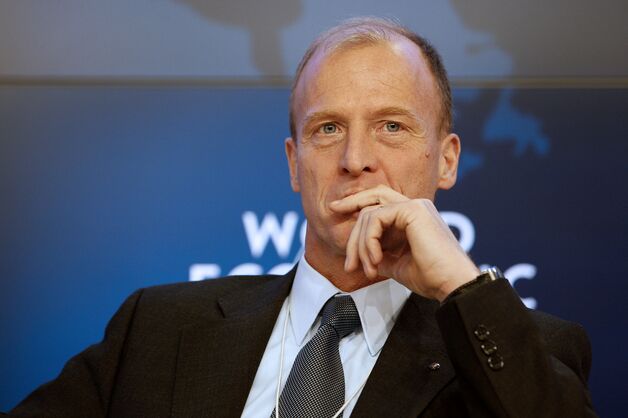Leeham News and Analysis
There's more to real news than a news release.
- Bjorn’s Corner: Faster aircraft development. Part 22. Serial Production.
- Boeing is on its way back, but there’s a long way to go
- Comments Open Forum
- Airbus adds emphasis for A220 to regional airlines; adding high-density version
- Airbus gets new CEO for Commercial Aircraft; faces supply chain issues, decisions on A220 Stretch, Open Fan engine
Air Berlin, Europe’s ninth carrier, announces serious makeover
By Bjorn Fehrm
October 06, 2016, ©. Leeham Co: Air Berlin, Germany’s second airline and Europe’s ninth largest carrier by passengers carried, announced that it will wet-lease 40 aircraft to Lufthansa together with many European routes, concentrate all tourist operations into a new business unit before spinning it off and that it will reduce staff further.
This comes after combined losses of €1.7bn since 2010. Several restructuring programs have not stemmed the losses. Last year they rose to €0.45bn and they have continued on in 2016. Read more
Posted on October 6, 2016 by Bjorn Fehrm
Looking 15 years ahead for Airbus, Boeing
Oct. 5, 2016, © Leeham Co.: The next 15 years won’t bring any relief to crowded airports and airplanes but nevertheless there are warning signs for the likes of Airbus, Boeing and the supply chain.

Michel Merluzeau
Looking ahead to 2030 will see aircraft production peaking early in the next decade but begin to fall off or the Big Two Original Equipment Manufacturers as new entrants begin to be felt, predicts Michel Merluzeau, an independent consultant.
Merluzeau presented his forecast yesterday to the British American Business Council Pacific Northwest chapter’s annual one-day conference in Seattle.
“I’m pretty comfortable about the next five years. I’m comfortable in the next five years. The five years after that,” Merluzeau said his confidence level declines because there are so many variables, ranging from issues within the industry to large ones outside it.
Posted on October 5, 2016 by Scott Hamilton
Ford Tri Motor: flying in history
Oct. 4, 2016, © Leeham Co.: The Ford Tri Motor waddled up to the private air terminal in Aurora (OR) Sunday, with a three Pratt & Whitney radial engines running smoothly until shut down. Then the No. 3 engine backfired several times, spitting flames from the exhaust stacks.
This was its introduction of the ancient airplane to a score of people who waited more than an hour for rain to stop and the ceiling to rise to about 2,000 ft so short, 15 minute rides could begin.
With taxi in-and-out, the entire experience would last all of 30 minutes, not long for the $70 fee. But then, how many times does the opportunity to ride on one of aviation history’s most iconic airplanes arise?
Posted on October 4, 2016 by Scott Hamilton
Management buys company, Altavair emerges
 Oct. 4, 2016: Shifting in the aircraft leasing business continues. Guggenheim Aviation partners (GAP) has been purchased by GAP’s management, ending a relationship with the giant Guggenheim investment group that began as a joint venture in 2003.
Oct. 4, 2016: Shifting in the aircraft leasing business continues. Guggenheim Aviation partners (GAP) has been purchased by GAP’s management, ending a relationship with the giant Guggenheim investment group that began as a joint venture in 2003.
In recent years, mega-lessor ILFC was acquired by AerCap; the Royal Bank of Scotland sold its leasing unit to a Japanese company to form SMBC Aviation Capital; Avolon, an Irish company, was purchased by China’s HNA Group which also may purchase CTI’s leasing arm, just to name.
GAP’s new name is Altavair AirFinance. There are more than 50 aircraft in the portfolio, mostly wide-bodies concentrated around the Airbus A330 and Boeing 777. There are also a number of narrow-bodies.
Airline assets and lessor assets
Subscription required
Introduction
Part 1: The Big Two OEMs
Oct. 3, 2016, © Leeham Co.: There are airline assets and there are leasing assets.
That’s a good airplane but it’s not a good leasing asset.
These are the succinct remarks of just two lessors who decide what aircraft to add to their portfolios.
What do they mean by this and why do they say this?
We’ll take a look today at the thoughts behind these positions.
Summary
- Not all aircraft, however good operationally they may be, make a good acquisition for lessors.
- Lessors have requirements that are beyond those for airlines.
- Lessors play increasing important role in the airline industry.
Posted on October 3, 2016 by Scott Hamilton
Airbus, Airlines, Boeing, Bombardier, CFM, Embraer, GE Aviation, International Aero Engines, Lessors, Pratt & Whitney, Premium, Rolls-Royce
737 MAX 200, 737-7, 737-8, 737-9, 747, 767, 787, 7E7, A319ceo, A319neo, A320ceo, A320NEO, A321LR, A321NEO, A350, A350-1000, A350-2000, A350-800, Airbus, Boeing, Bombardier, CFM, CFM56, Embraer, GE Aviation, GTF, International Aero Engines, Pratt & Whitney, Rolls-Royce, V2500
Pontifications: Reorganization at Airbus
Oct. 3, 2016, © Leeham Co.: Airbus confirmed Friday the news reports from Bloomberg and Reuters that a major organizational restructuring of the company is underway.
The Wall Street Journal had this report Friday.
Airbus Group CEO Tom Enders is leading the reorganization. Airbus Commercial CEO Fabrice Bregier becomes president of the Group and president of Airbus Commercial. Other top-level changes, including at 50% owned ATR, the turbo-prop manufacturer, leaked out during the week.
As yet, nothing has been reported about the potential retirement of John Leahy, COO-Customers. Leahy turned 66 in August. It’s always been

Tom Ender, CEO of Airbus Group. Photo via Google images.
assumed he won’t leave Airbus until he’s carried out feet-first. He enjoys the hunt for new sales and he thrives on the competition “with my friends in Seattle.” Update: I missed this article from Reuters in which his deputy, Kiran Rao, is the likely successor.
But following an appearance as the featured speaker at the September Wings Club meeting, Leahy for the first time publicly waffled about his future. This begs the question, of course, who might succeed Leahy. So far, nothing has leaked about this.
Posted on October 3, 2016 by Scott Hamilton
Bjorn’s Corner; The Chinese civil aircraft industry
September 30, 2016, ©. Leeham Co: In our Corners on East bloc aeronautical industries, we will now look at the Chinese civil aircraft industry.
The Chinese aero industry has similarities with the Russian industry in its overall structure. From the start of the industry in the 1950s, it was structured after the Soviet model of research institutes, design bureaus and production companies.
The difference to the Soviet Union was that its own Chinese aircraft designs only started in the 1970s. Before that, the industry built Soviet designs on license and then modified versions of licensed designs.
The first own aircraft designs were presented in the 1980s with a focus on military designs for the first 20 years. Read more
Posted on September 30, 2016 by Bjorn Fehrm
Mitsubishi MRJ90 arrives in Washington State for certification flight testing
Sept. 29, 2016, © Leeham Co., Moses Lake (WA): After months of delays between the first flight and yesterday, the first Mitsubishi MRJ90 arrived in Moses Lake (WA) to begin certification flight testing. This is scheduled over 12-18 month.
The first Flight Test Aircraft (FTA), registration JA21MJ, left Nagoya, Japan, on the 27th and after two stops, overnighted in Anchorage. From there, the aircraft flew non-stop to Moses Lake, in Central Washington State.
Tracking the aircraft proved problematic. There were long gaps during which Flightradar24 and Flightaware had no data from the aircraft. Dedicated transponders will be put on the next three FTAs.
The MRJ90, which is running about three years late, is the first commercial aircraft developed by Japan since the NAMC YS-11 turbo-prop in the early 1960s. Mitsubishi is an industrial partner on the Boeing 787.
The MRJ90 landed at about 5:47pm local time (unofficial time) after a low-level flyby. This was followed by the traditional water cannon salute.
Videos are below the jump.
Posted on September 29, 2016 by Scott Hamilton
ISTAT 2016: Air transport market at cross-roads
By Bjorn Fehrm
September 29, 2016, ©. Leeham Co: We visited ISTAT (International Society of Transport Aircraft Trading) 2016 conference in Barcelona this week. The most interesting part of the conference was the economists panel with discussions between the economist: Brian Pierce, chief economist of IATA; Peter Morris, chief economist at Ascend; and Adam Pilarski, SVP and Head of Consulting, AVITAS.
The economists agreed that the air transport market is at a cross-roads, but not which route it will take.
Let’s start with the market facts presented by IATA’s Pierce: Read more
Russian-Chinese wide-body: Program responsibilities
By Bjorn Fehrm
Subscription required.
Introduction
September 29, 2016, ©. Leeham Co: We will now finish our series about the Russian-Chinese wide-body with looking at who will have what role in the program.
As we described in the initial article, “Background and outlook,” Russia and China have vastly different competencies when it comes to making a state of the art wide-body aircraft.
Russia has made airliners since the 1930s, including wide-body jets. China did not design its own jet aircraft (military or civil) until the mid-1980s. Most of the aircraft produced still today in China have their origin in Russian designs.
At the same time, we saw in the article about the market demand for the aircraft that the Chinese market is 90% of the home market. This makes for China demanding important parts of the aircraft’s production, and China has the money to invest in production facilities.
All this will influence how different parts of the project will be shared between Russia’s United Aircraft Corporation (UAC) and Commercial Aircraft Corporation of China (COMAC).
Summary:
- Russia and China enter the wide-body project with widely different knowledge bases.
- Russia has long time knowledge on how to develop and produce aircraft and their engines.
- China on the other hand has the market for the aircraft.
- China also know a lot about serial production and have money to invest. Read more
Posted on September 29, 2016 by Bjorn Fehrm







